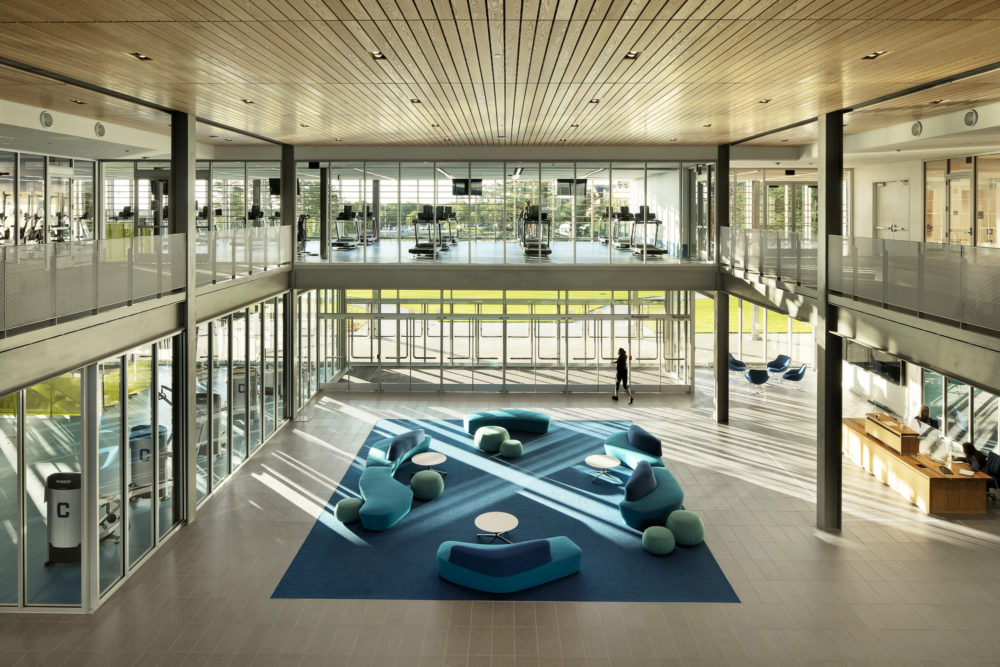
科比学院哈罗德·阿方德运动中心
美国缅因州沃特维尔市
 Sasaki
Sasaki
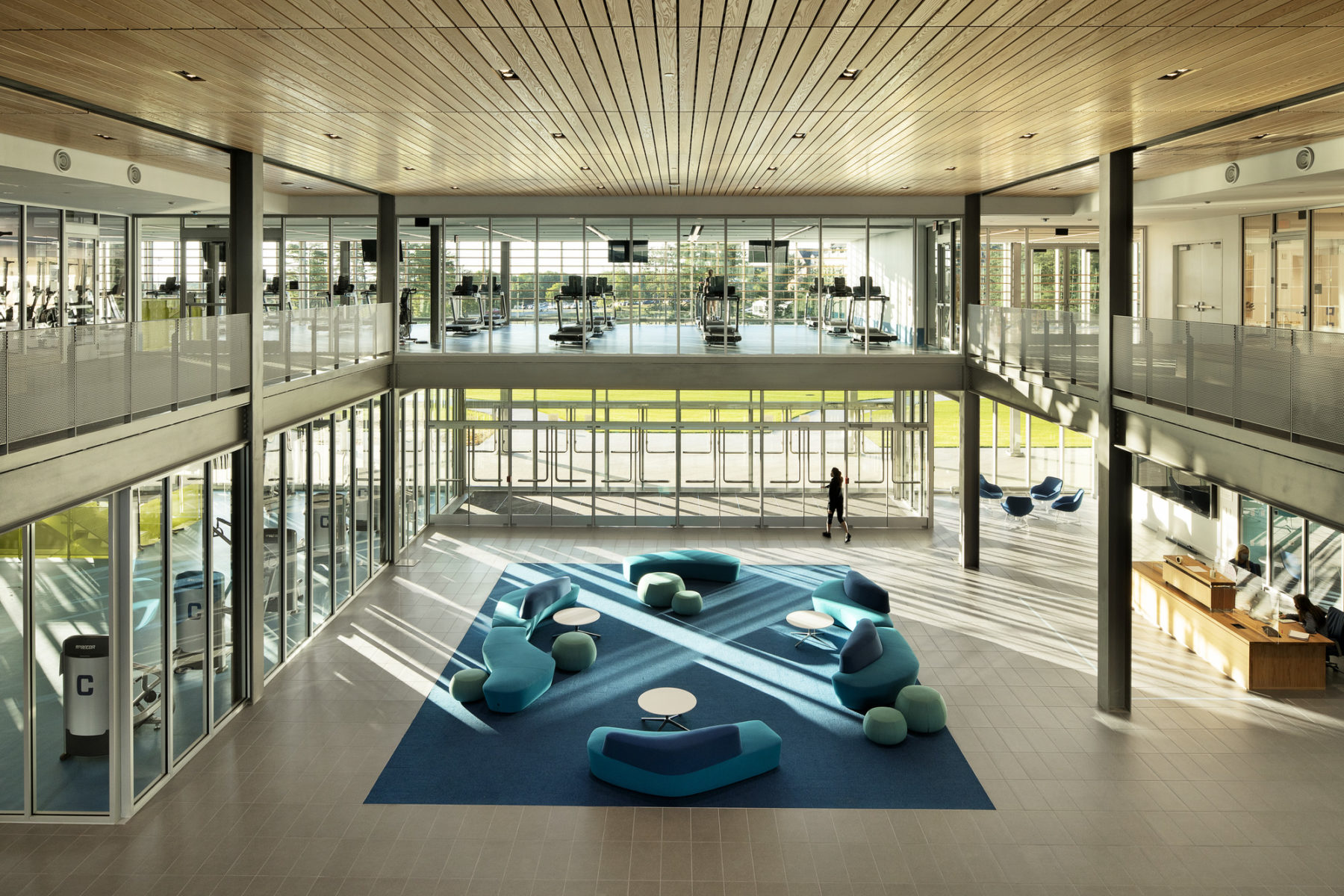
This article originally appeared in the March 2021 issue of the National Association of Collegiate Directors of Athletics (NACDA)’s Sports Administration magazine.
No matter the division, the size of the school, or the prominence of its athletics programs — athletics facilities increasingly end up moving to the periphery of college and university campuses. While schools may not be intentionally trying to move athletes from the heart of the campus — with the space required to build any individual athletics facility, compounded with the enticing efficiencies of creating comprehensive athletics districts that require vast tracts of land — it’s easy to see why land-locked institutions often migrate their athletics programs to the edges of campus or to another campus altogether. Though space constraints may necessitate these moves, one of the unintended consequences is that the student-athlete and their events become isolated; and with that isolation student-athletes may miss out on key facets of a well-rounded student experience — which impacts the individual, their teams, athletics programs, and the campus at large.
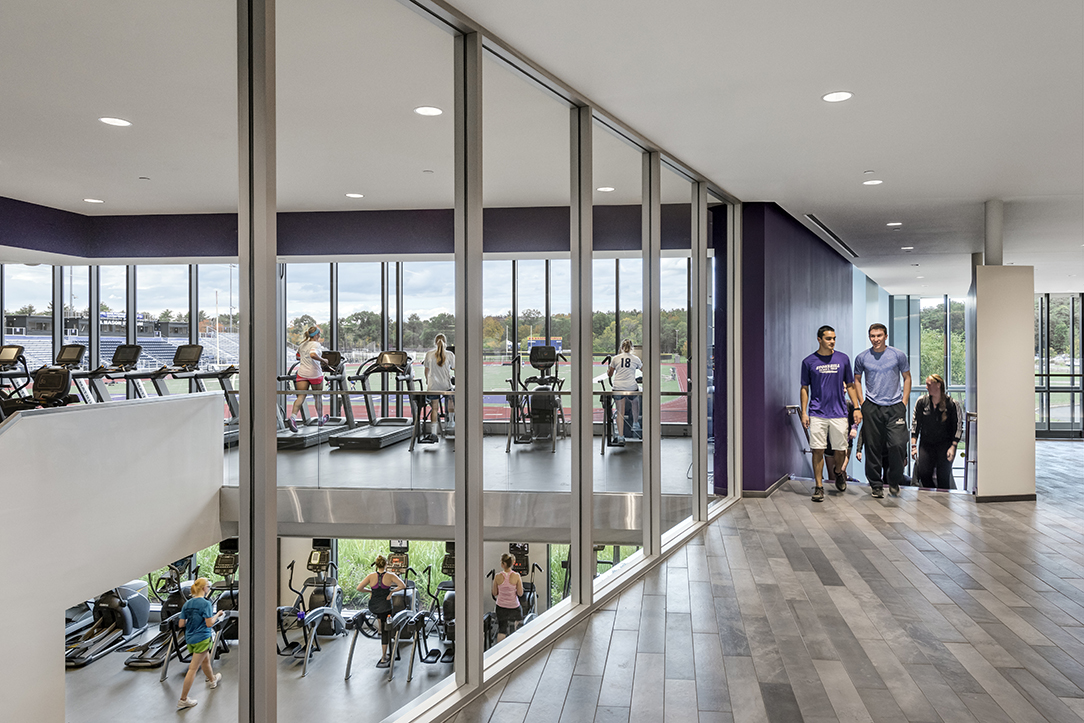
Transparency characterizes the experience for students and student-athletes, alike, at the Stonehill College Athletic and Fitness Center
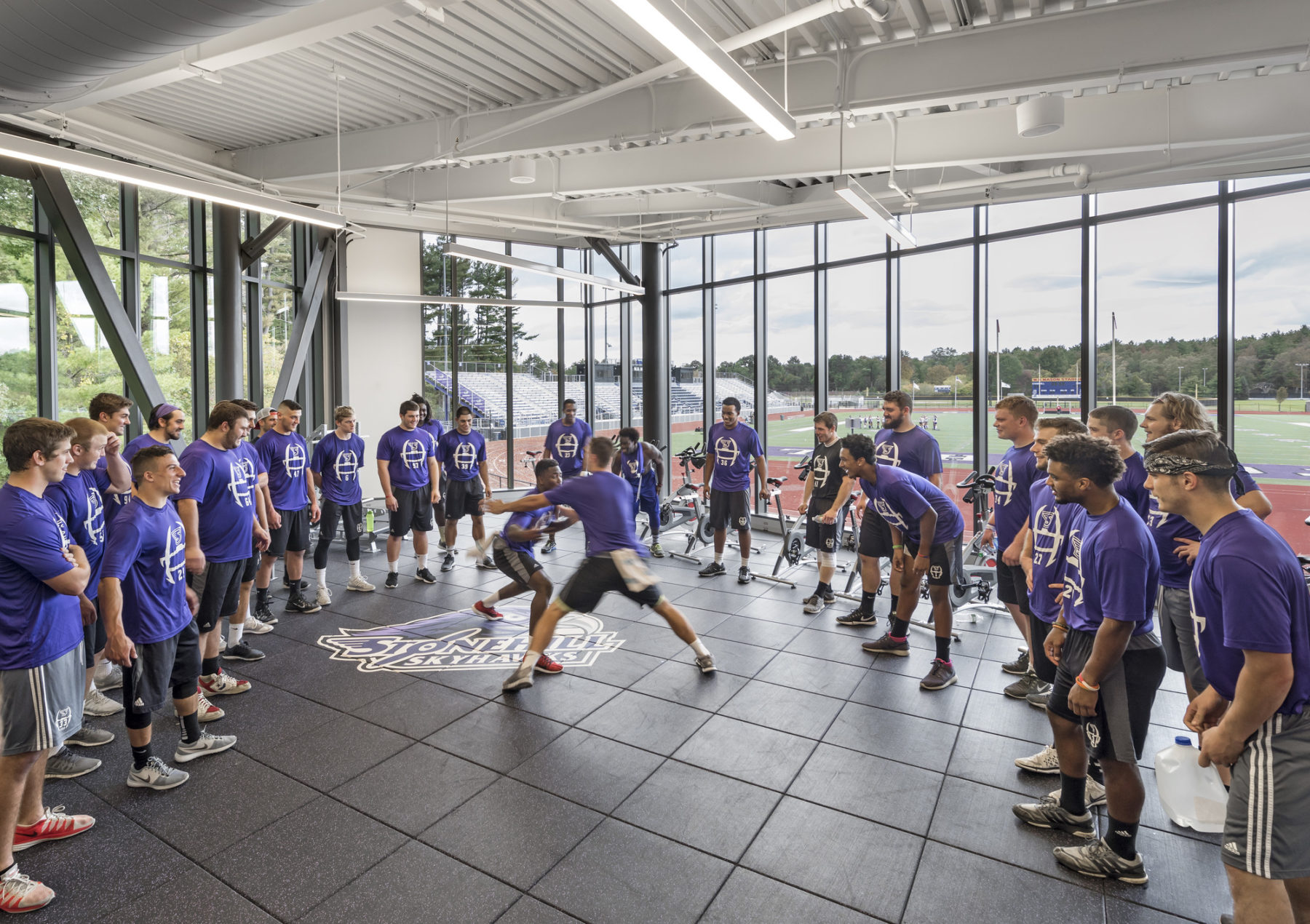
Flexible spaces serve many purposes throughout the day for different groups of athletes and students at Stonehill College
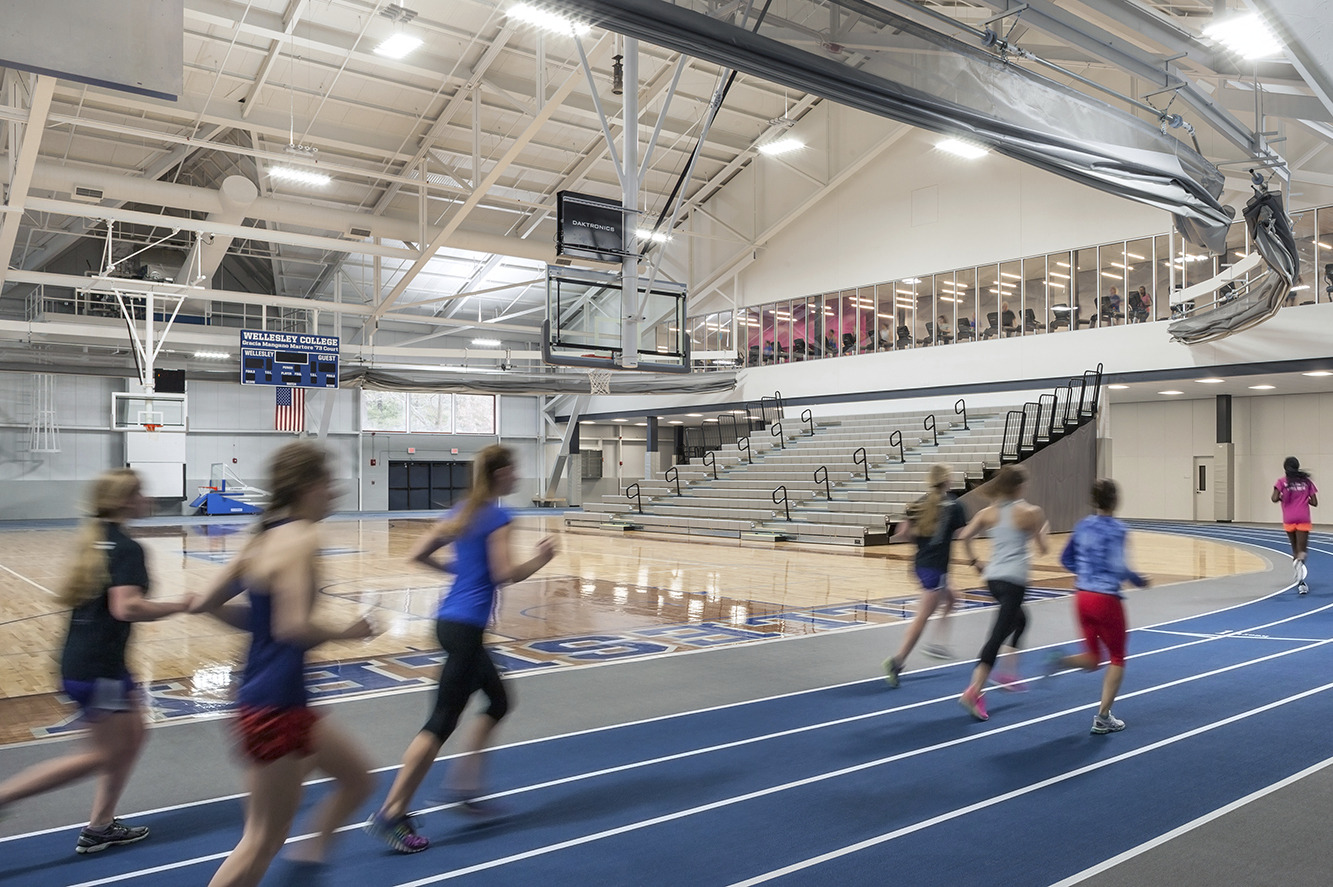
Designers thought through the full, integrated student-athlete experience in a recent renovation of Wellesley College’s Dorothy Towne Fieldhouse
Increasingly, a slew of support services are co-located with athletics facilities to ensure student-athletes have quick and ready access to anything they may need to succeed, on and off the field. Easy access to nutrition, mental health services, academic support, and medical care can be a crucial efficiency play for the busy student-athlete trying to juggle a packed schedule, but it leaves little incentive for them to integrate into the main campus when everything they need can be found within their own campus within a campus. Student-athletes with few reasons to integrate into main campus and cultivate relationships with non-student-athletes, end up both physically and socially isolated from the broader school community and miss out. “It’s important to have athletics integrated into the fabric of a campus. And with the current COVID disruption to norms as we’ve known them, I think schools have a real opportunity to think differently about campus planning in the future and will hopefully start to find ways to re-integrate athletics spaces and support programs,” says Matthew Robinson, Chair of Academic Priorities and Presidential Advisory Committee at the University of Delaware. “This mindset would benefit everyone on campus, but would help student-athletes most of all to be better woven into campus life and culture.”
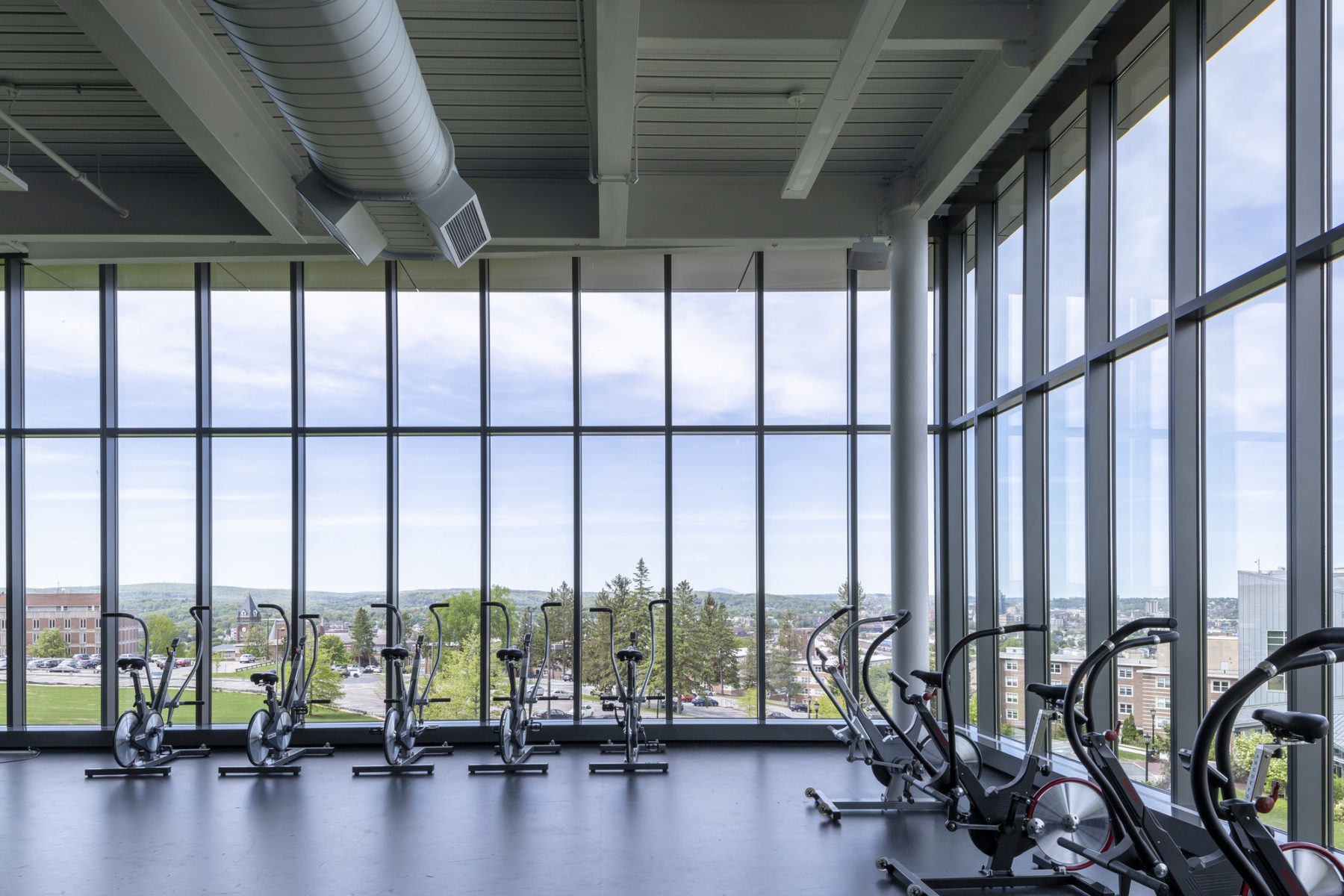
The College of the Holy Cross Hart Center Expansion maximizes hilltop views, maintaining a visual connection to the rest of campus and town and creating an inviting, open atmosphere
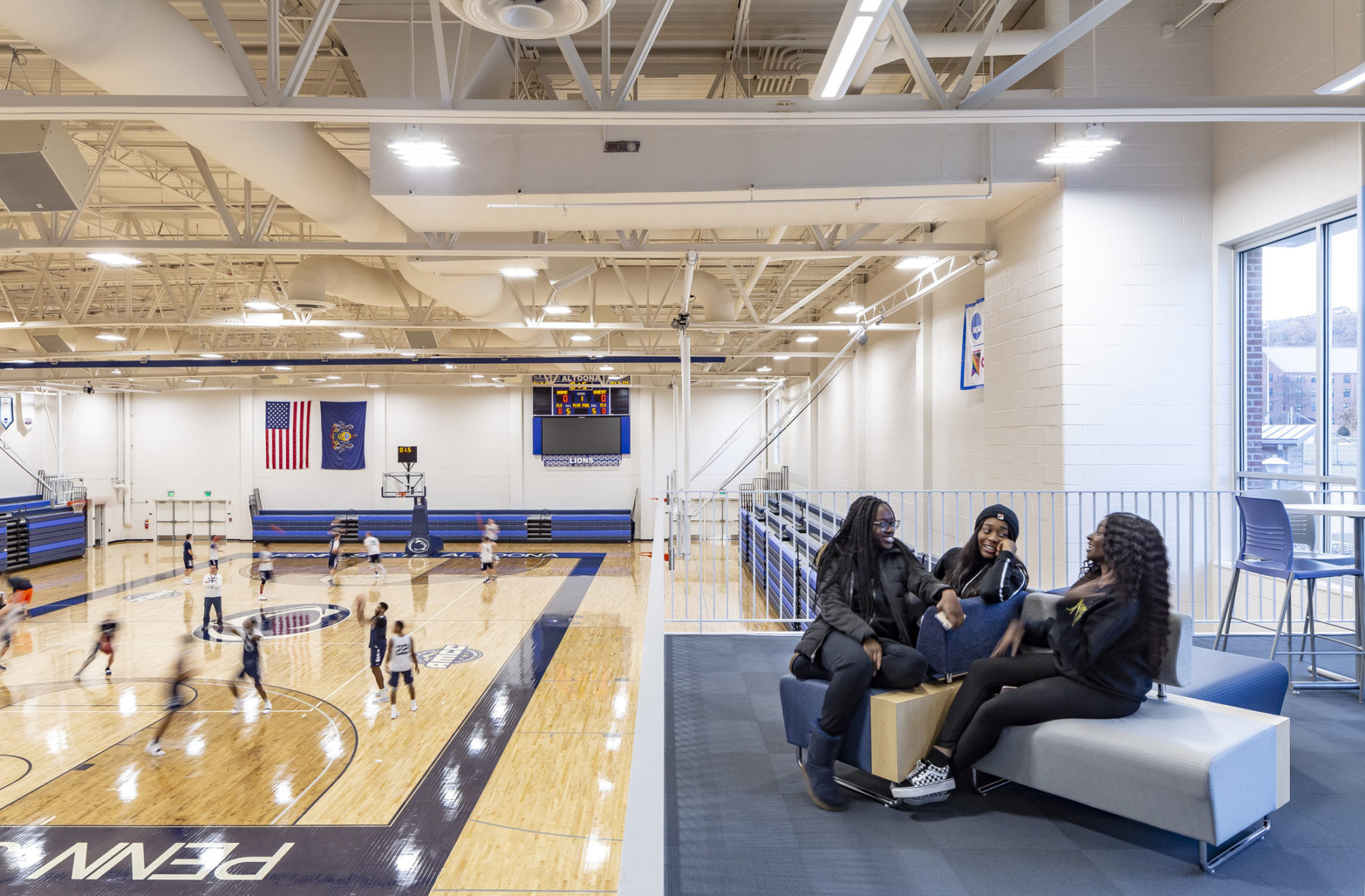
The Penn State Altoona Steven A. Adler Athletic Complex integrates many areas for the broader community to engage with athletics on campus
With athletics programs and their facilities often receiving outsize investment due to their capacity to inspire donorship and alumni engagement, resentment of athletics programs and student-athletes can build amidst the rest of the school community. With this dynamic in play at many schools, demonstrating the cultural and financial good that athletics brings to the entire community is important. One way of cultivating greater campus-wide understanding and appreciation of athletics is by creating more touchpoints for interaction. Joe Sterret, Dean of Athletics at Lehigh University says students are more prone to support games and matches when they are supporting athletes they consider to be their friends. Even then, many are not inclined to come out and support athletic contests when these events are out of sight and out of mind. “Not only are we asking students to pull themselves away from their academics to head over to catch a game, but we’re competing with instant digital access to thousands of streaming athletic contests.”
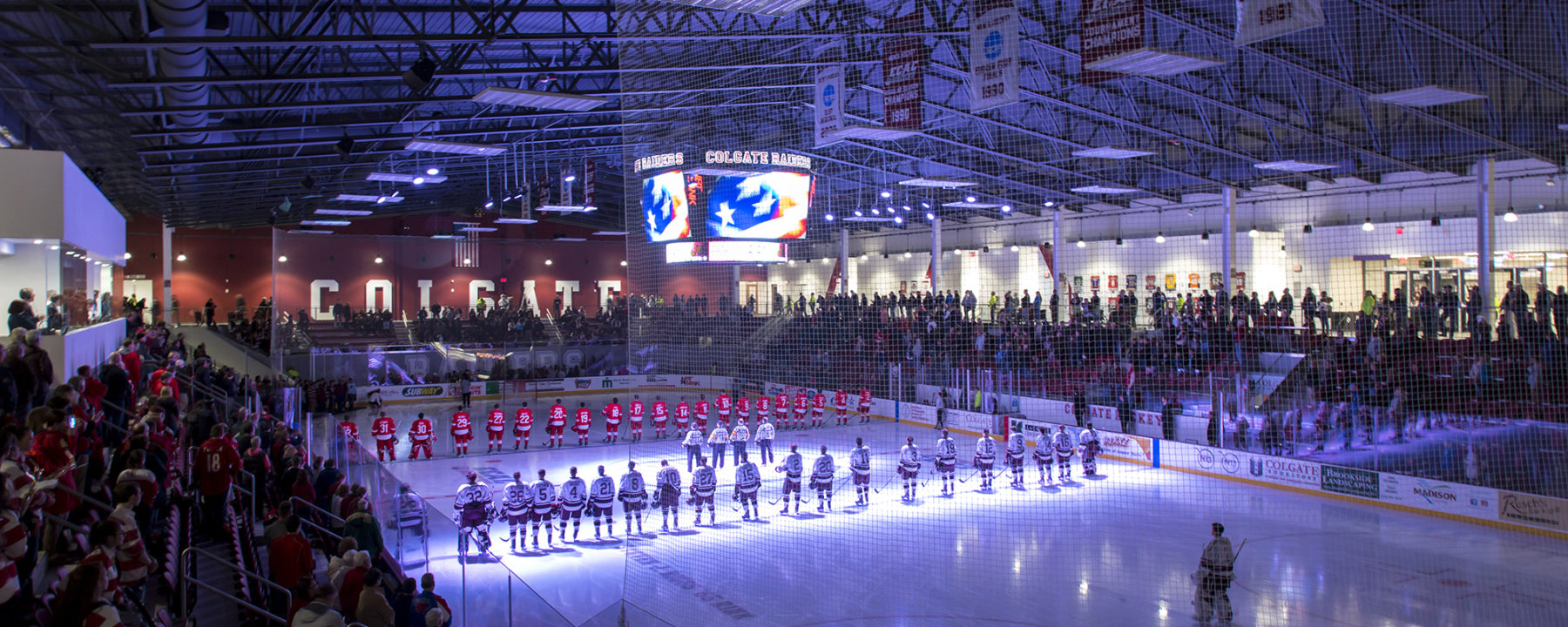
The Colgate University Class of 1965 Arena creates a space for current students and alumni, alike, to build meaningful relationships with the college that extend well beyond graduation day
Building long-term support for athletics is important to the success of any athletics program. For Division III schools like Colby College, comprehensive facilities like the new Harold Alfond Athletics and Recreation Center reinforce campus-wide embrace of athletics and wellness for every student. Here, students and the broader Waterville, Maine community get a front-row seat to the student-athlete experience. This kind of integration as one community helps to foster appreciation for athletic excellence, embrace of personal wellness, and love and pride for the Colby Mules that can extend for generations and across the world. At every division level, there is no replacement for genuine love of the home team. Cultivating an appreciation for athletics as an integral part to the student experience and the identity of a school can produce many tangible benefits — more fans in the stands, greater understanding of the demands placed on student-athletes and the value they bring to the community, and stronger pride and investment in programs — all of which produce profound benefits that extend to everyone on campus, on and off the field.